Vasco da Gama
Background
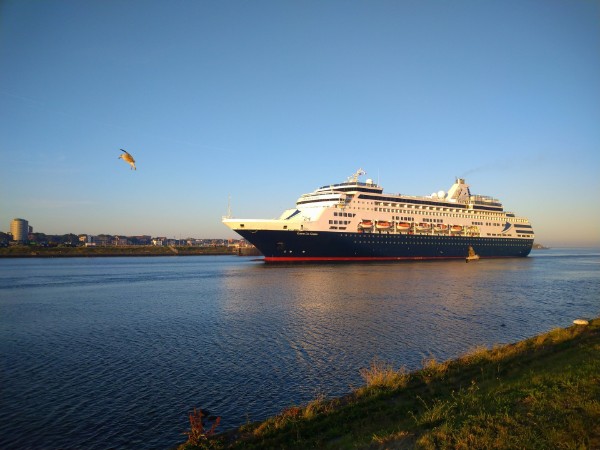
Vasco da Gama is seen here entering the IJmuiden north lock in the early morning of august 31st, 2019. As a Holland America Line ship she has never visited her former home-country. Luckily, as a CMV ship for Transocean, she did.
In the end of the 1980's, Carnival Cruise Lines wanted to take over the business of the fast growing Royal Caribbean Cruise Line, but this was prevented by one of RCI's stakeholders, Arne Wilhelmson, who bought out the other main stakeholders within the company to prevent the Carnival deal. This move was the beginning of the big rivalry between the two companies and because of this failure, Carnival reacted in buying the Holland America Line instead in the early days of 1989.
It was not a bad move, as the 1870-founded Holland America Line at the time was a growing company too. They sailed with one of the last great oceanliners in the world, Rotterdam of 1959, that was one of the most beloved cruiseships in the world. Also, they had two of the finest ships built in the 1980's, the Nieuw Amsterdam of 1982 and the Noordam of 1983, and as a fourth ship they sailed with the Westerdam. This last ship was built in 1986 for Home Lines, but Holland America Line had just taken over this company and their two ship fleet Homeric and Atlantic in 1988. Atlantic was chartered to Premier Cruise Line as Starship Atlantic after the take-over and Homeric became the Westerdam, a fine 54.000-ton modern cruiseship. Also, HAL owned the three ship fleet of Windstar Cruises and several lodges, hotels, busses and traincoaches in Alaska via Westours. Also, HAL also ordered a class of three 600-passenger and 60.000-ton cruiseships to keep up with the growing modern cruisefleet. The names for this class were already known; Statendam, Stellendam and Schiedam. They were planned to become larger versions of the 34.000-ton N-class of the 1980's. Their names were the reason that this class was known as the S-class, all named after ships within the long HAL heritage whose names started with an S.
After Carnival had taken over the classic established Dutch company, the Carnival Corporation was formed with HAL retaining their seperate management and, more importantly, the name of the company and the names of the ships. It had been feared that the large Carnival Cruise Lines would diminish the line just after take-over, especially when the already firm order of as least two of the S-class ships with the German Bremer Vulkan Yards was ended and the loss-making Windstar was put up for sale. Also, the company who had always been built around classic traditions was likely to fall victim to modernity and equalisation, at least that was expected to happen. But Carnival did quite the opposite and this became clear when they ordered a large update for the 1959-built expensive flagship Rotterdam and also the already planned lenghtening of the Westerdam went ahead. The reason for the cancellation of the original Bremer Vulkan order was also because Carnival didn't think that this order was going to propell the line forwards to the extend that it could achieve. Carnival itself even took over the structure of officers ranks aboard ships of HAL and started to strongly market Windstar Cruises. Next to that, the order for the S-class was re-negotiated with the Italian shipbuilder Fincantieri and in 1989 already the first of these new S-class ships was ordered from that yard.
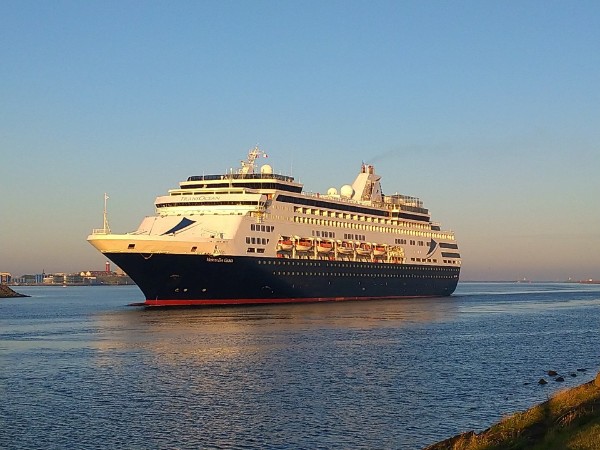
Construction and general statistics
The new S-class, this name was still used, was officially ordered as a three-ship class from the Fincantieri Yards at Monfalcone, Italy at the 29th of november in 1989. Fincantieri wasn't a household name in shipbuilding at the time, they were building the two Sitmar-ordered but now P&O Princess Cruises cruiseships Crown Princess and Regal Princess and they had also the new Costa Cruises ship Costa Classica on order. Before that, Costa's Enrico Costa of 1966 had been the last mayor cruiseship that had been built in Italy. These new orders were mainly because of heavy subsidies that the Italian government granted to refloat the struggling large Italian shipbuilding wharves and to keep the workforce busy.
The first ship was to be named Statendam, followed by Maasdam, Ryndam and later Veendam. So the names of the original trio were changed, but still they were classic Holland America Line names that had all been used to great extend within the line's long history. The ships were a little smaller then the ships originally ordered from Bremer Vulcan, as Statendam was to become a 55.451-ton ship with a lenght of 219,21 meters, a width of 30,80 meters and a draft of 7,5 meters. With this, she was going to become the largest ship ever ordered for the company. She was built as yardnumber 5881 and was built with 14 decks for her 1929 passengers and 618 crewmembers. You can see that the numbers of passengers in this new S-class is more then double the number of passengers originally visioned by HAL in the first S-class. The ship was powered by two 9-cylinder and three 8-cylinder diesel engines and driven by two screws providing a speed of 22,6 knots, although 20 knots is the common service speed. Officially ordered for Holland America Line Westours, she was homeported in Nassau flying the flag of the Bahamas. This was a change from the other Holland America Line ships, that had all been homeported in the Dutch Antilles.
The Statendam, the fifth ship woth this name in the Holland America Line history, floated out of her buildingdock at the 3rd of april in 1992 and she was delivered to the company at the 5th of january 1993.
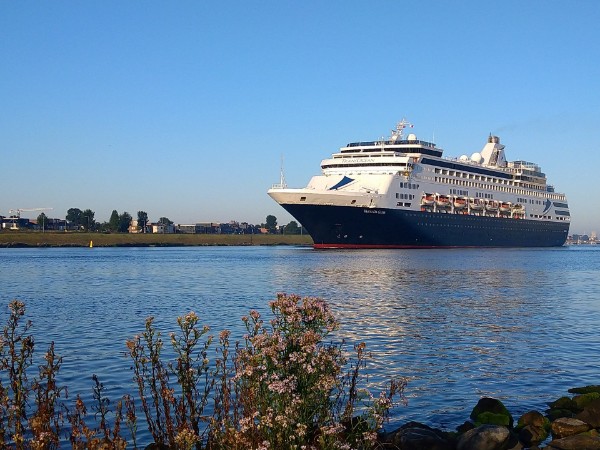
Passing the town of IJmuiden as seen from the northside of the North Sea Canal near the Velsen ferry.
Design
The newly ordered ships were designed by Carnival Cruise Lines, together with the Holland America Line newbuilding team. Also Fincantieri and Carnival's technical comsultants TMP were partners. The design was based on the Costa Classica, a ship that had also been built by Fincantieri and entered service in 1991. Remember that Costa Cruises at that time were not yet owned by Carnival but by the original Costa family. Problem was that the superstructure of the S-class ships was much heavier then the superstructure of the Costa Classica so extra ballast tanks were fitted within the ships hull to counterweight this. Those extra tanks could be filled with water for extra stability when the need should arise. It was feared during building that the ships of the S-class maybe were not going to pass the requirements for the 1990 SOLAS (Safety Of Lives At Sea) regulations. Luckily, the extra ballast tanks were not needed and the ships proved to be very stable in operations so they are mostly just empty. For extra stability, a 7,2 meter long bulbous bow, two 2,6 meter diameter low-vibration bow thrusters, bilge keels and two Hinze-flap rudders were installed. Hinze-flap rudders are rudders that can be moved independently within one structure. Also fin stabilizers and a stern thruster are installed.
The Statendam was the first ship in the fleet with a fully enclosed bridge, leaving the open bridgewings to the past. Within the closed wings, there are glass floors and microphones are placed outside the wheelhouse to make it possible to hear sounds from the outside.
Most of the public rooms aboard are placed on deck 7 and 8, with the lower cabinclasses lower down the hull and the higher classed higher up. On deck 11 the covered lido pool is located and deck 12 mostly is open deck space. A crew recreation deck is also there on deck 13, which is named deck 14 due to supersticious reasons. The designers really listened to the wishes of the traditional Holland America Line passengers, as there is a true wraparound teak promenade deck aboard (a passengers favorite), enough open deck space and a very traditional interiour style that was mostly designed by the Dutch company VFD (De Vlaming, Fennis & Dingemans) from Utrecht. VFD had been involved with Holland America Line shipdesigns before (Nieuw Amsterdam, Noordam and Westerdam) and asking them to do the job for Statendam meant that also Carnival wanted to keep traditions high.
The three highest classes of passener cabins, 149 in total, were designed with a private teak veranda, the highest number of verandas ever aboard a Holland America Line ship. Two entire decks were filled with balcony cabins and that was very innovative at the time. All cabins were designed by Kym Anton, a Holland America Line veteran designer and they were generally some 30 percent larger then aboard other main cruiseliners of the day. Of course all cabins are airconditioned and are fitted with world-wide dial telephones, closed-cirquit television, a minibar and a good array of bath and/or shower products.
The favorite Crow's Nest, the high atop lounge with bandstand and bar for the nightly hours returned although this lounge was designed by Joseph Farcus, the house-designer of Carnival Cruise Lines. His style normally is more flamboyant and colourfull, but aboard Statendam his design is much more classic and soft, showing another side of Farcus. The space is surrounded by floor to ceiling windows and inspiration was taken from Dutch world-renowned artist Piet Mondriaan. The passengers of Holland America Line are older and they tend to like their traditions of dressing up and keeping a quiet tone around the boat. That is why also an extended library annex card room could not be forgotten, as well as many seats just in quiet corners of the ship for reading or relaxing. The ship was modern for Holland America, but still kept the classic atmosphere with the use of many woods and toned-down colours aboard.
In the main double-deck Rotterdam Diningroom people normally like to dress up on every night, not just the gala diners. The space features dual staircases for dramatic entrances and 180 degree views of the ocean through floor to ceiling windows on three sides. Alternatively, there is also the lido restaurant which was less formal although also here, appropriate casual dressing is advised. There also is a splendid atrium with an ornate three-deck high sculpture named the Fountain Of The Sirens as the main focus. It shows various tales about the sea, based in Greek mythology. The gods Triton, Aphrodite and Poseidon are symbolised within the work. The two-deck showlounge is decorated in the theme of Van Gogh's Starry Night and was also designed by Joseph Farcus. Colours used are mostly blue, gold and green and the lounge is highlighted by two splended sweeping staircases.
A Holland America Line tradition also is to fill the ship with numerous works of art, many traditional or custom made. The company even offered guided tours for passengers to admire the most important works of art aboard and nowadays, that can be done using an iPad. One of the main features is an 18th century ship model worth over 80.000 USD.
With the large open diningroom aft, fear was there for extensive vibrations from the ships propellers. That is why the propellers recived a far greater then normal skew and the hull of the ship was stiffened far more then aboard other cruiseships. Also, the parts of the ship above the screws and shafts are moslt so-called floating floors with much less impact from the movements below the hull. These solutions make the S-class almost vibration free, not only in the aft of the ship, but throughout.
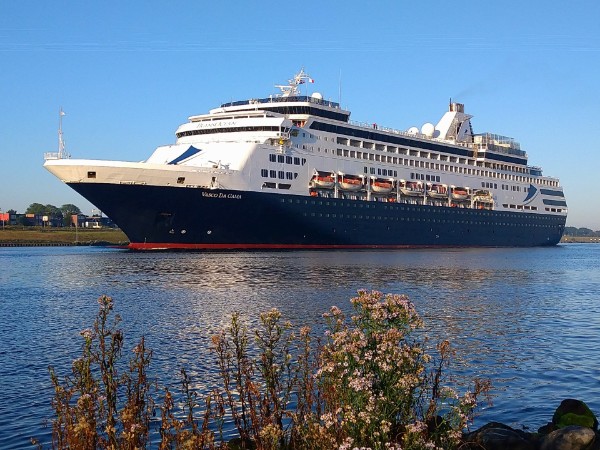
Carreer
After her delivery at the 5th of january in 1993, Statendam was sailing for Fort Lauderdale from where her Maiden Voyage to Los Angeles was going to start. For most of her carreer with Holland America, she sailed for the North American market in Alaska, the Caribbean and to Mexico. For cruises to Alaska, Vancouver was her main departureport during the summermonths and during wintertime she sailed the South Pacific and the Panama Canal. In 1996, due to new Dutch maritime laws, it was possible again for her and her fleetmates to be re-flagged to the traditional Holland America Line homeport of Rotterdam, so she started flying the Dutch flag. Once again showing Carnival's commitment to traditions with HAL.
Her carreer with HAL was largely uneventfull, which is a good thing for a cruiseliner. But at the 2nd of august in 2013, when sailing in Glacier Bay, Alaska, the Statendam reacted to a distress call by the tourboat Baranof Wind. The ship, with 105 passengers aboard, was stranded within the ice of the Hopkins Glacier and Statendam went on a rescue mission. The rescue proved succesfull as all aboard the small tourboat could be picked up by Statendam's lifeboats 8 and 10 and all of the rescued recieved a good onboard meal in the Rotterdam diningroom. Afterwards they were disembarked at the Glacier Bay National Park ranger station a few hours later. It looked like the Baranof Wind liked this, as in june 2015, she again suffered mechanical issues in the Glacier Bay and had to be assisted by Holland America's Noordam in the process.
In october of 2015, after a season of Alaska cruises from Vancouver and Homer, Statendam was drydocked in Singepore at the SembCorp Marine Wharf to be rebuilt into the Pacific Eden as she had been transferred to P&O Australia by parent company Carnival Corporation. P&O Australia was part of the Holland America Group, the largest group within the structure of the corporation. Her maiden cruise under her new name started at the 15th of november in 2015 from Fremantle and she settled in for a year-round deployment from Australian ports. In the Holland America fleet, her place was taken by the 99.900-ton Koningsdam. On the 25th of november in 2015, Pacific Eden was officially named in Sydney by Kate Richie, an Australian actress, radio presenter and author of childrens' books. Statendam's sister Ryndam also came over to Australia and she was renamed Pacific Aria. In the Holland America Line fleet, both planned sisters of Koningsdam took over the names of the older sisters as the first sister came into service in 2018 as Nieuw Statendam and the second in 2021 as Ryndam.
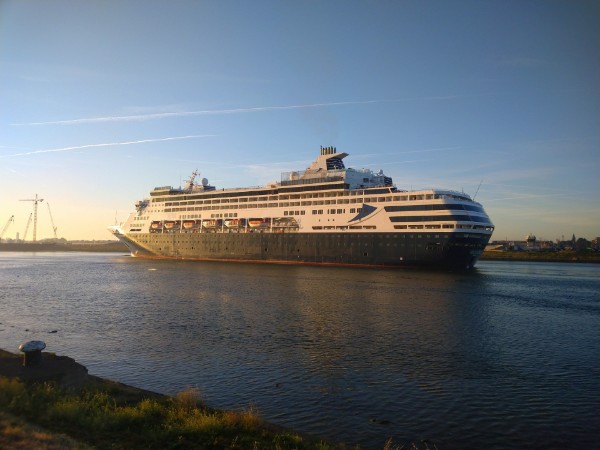
Pacific Eden's Australian carreer was rather short-lived, as in march 2018 already it was announced that she was going to leave the P&O Australia fleet as she was sold to the British-based company Cruises & Maritime Voyages (CMV). Her last cruise ended at the 16th of march in 2019 and she was then rebuilt at Singepore again into CMV's Vasco da Gama. Carnival Corporation was of course ordering new ships for all of its fleets and they also stated that the older units were going to be phased out regularly. With Pacific Eden's age now being 26 years it seems she was classed as outdated for the P&O Australia fleet. For CMV, she was going to be their most modern ship, the sixth in the growing fleet, and her first 43-night cruise departed from Singepore to London and Amsterdam at april the 22nd already. It was kinda ironic that the former Dutch ship had never visited The Netherlands under the Statendam name, now was going to visit Amsterdam on the first cruise for her newest owners.
For CMV, Vasco da Gama will sail European and Australian cruises under the Transocean name, a name that is now owned by CMV after that companies demise in 2013. She is of course named after the famous Portugese explorer in the tradition naming tradition of CMV, joining the 1964-built Marco Polo, the 1983-built Magallan and the 1989-built Columbus. The fleet furthermore is the 1946-built Astoria and the 1980-built Astor, both under traditional Transocean Tours names.

